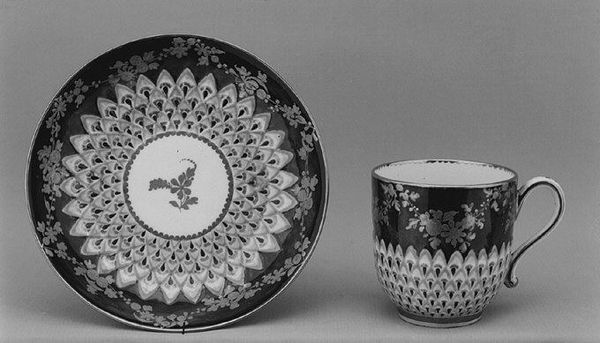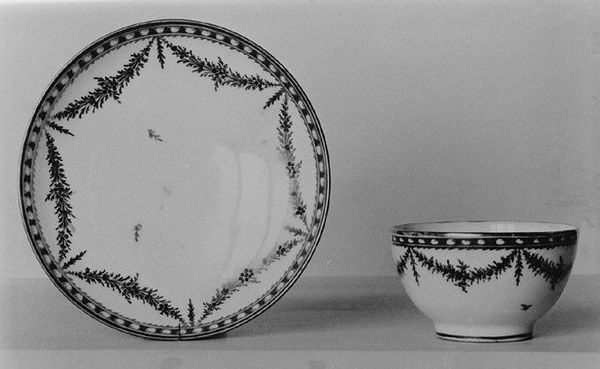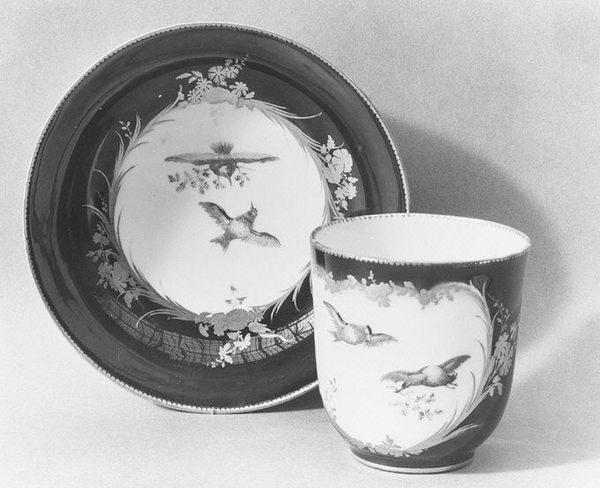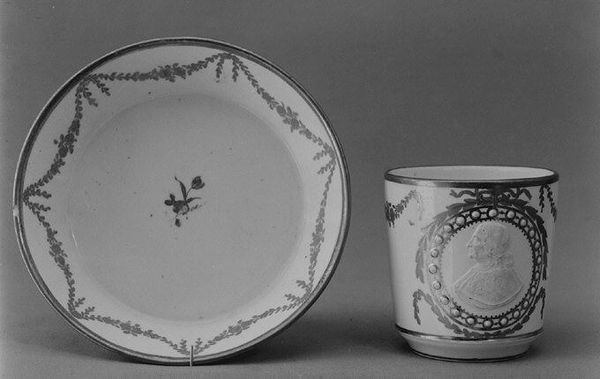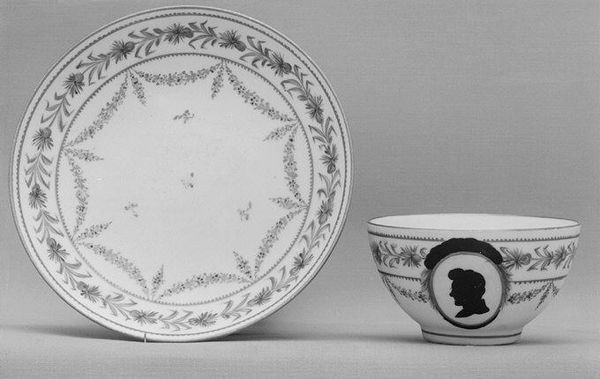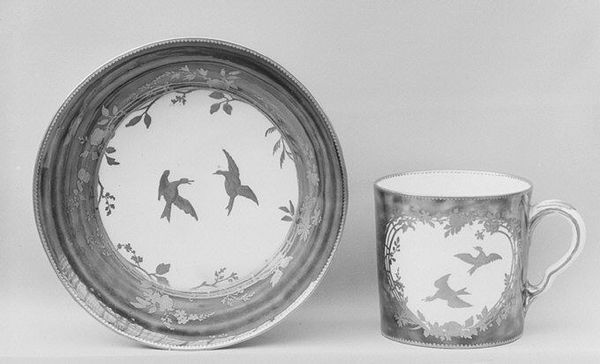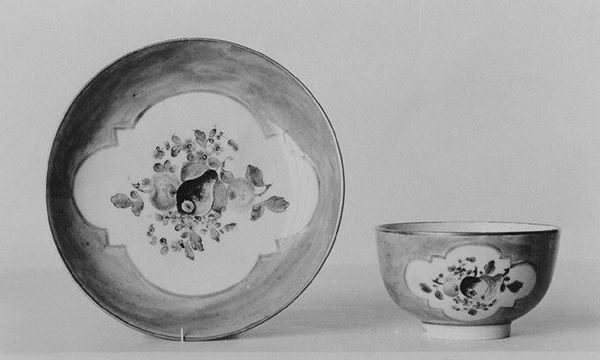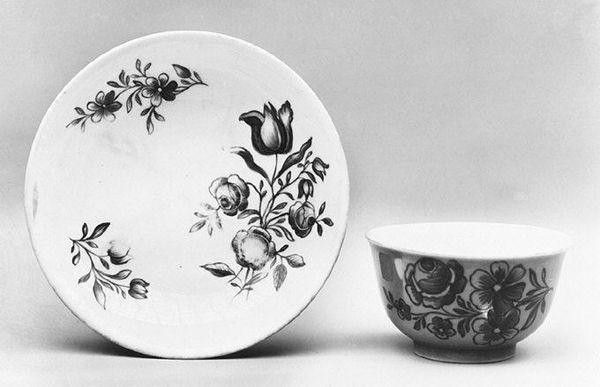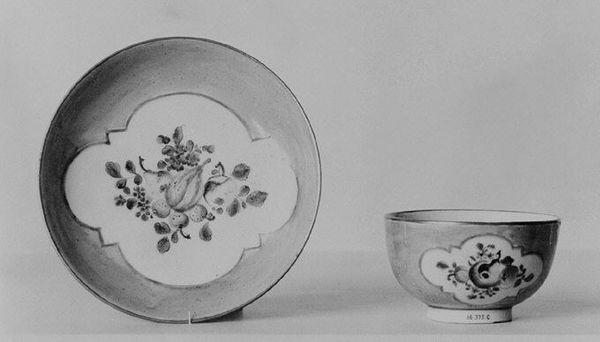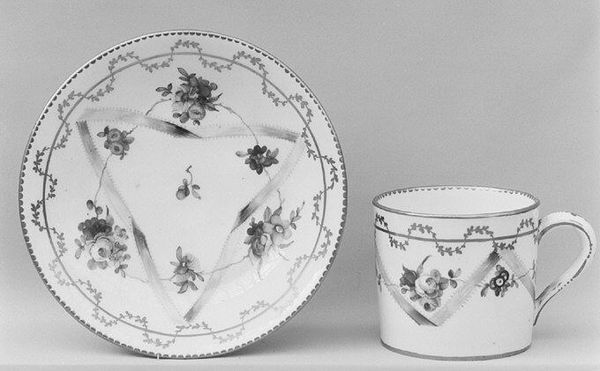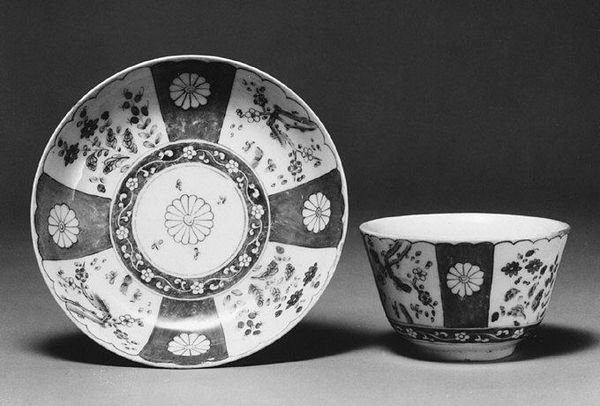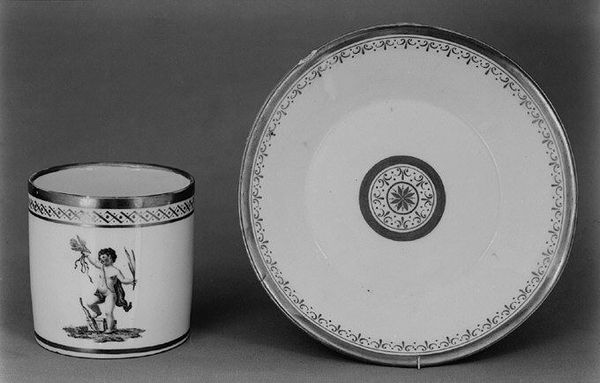
ceramic, porcelain, sculpture
#
decorative element
#
ceramic
#
bird
#
flower
#
porcelain
#
sculpture
#
decorative-art
#
rococo
Dimensions: Height (cup .1a): 4 3/8 in. (11.1 cm); Diameter (saucer .1b): 6 3/8 in. (16.2 cm)
Copyright: Public Domain
Curator: At first glance, a certain serenity strikes me. There's a subtle interplay between positive and negative space... the whiteness framed by the darker surround, almost a yin-yang dynamic. Editor: Indeed. What we're observing here is a porcelain "Cup (gobelet litron) and saucer," dating back to 1754, crafted by the Vincennes Manufactory. Currently, it resides here at the Metropolitan Museum of Art. Curator: The form itself, the clean lines of the cup versus the gentle curve of the saucer, creates a very satisfying visual relationship. I find myself focusing on the subtle textures as well – what could you tell me more about its semiotic functions? Editor: As objects produced during the height of the Rococo era, they underscore the aristocracy's preoccupation with nature, idealized of course. Imagine this gracing the table of someone like Madame de Pompadour. The birds and floral motifs would have spoken to the luxurious lifestyle centered on leisure and pleasure. Curator: Do you believe the positioning and number of birds play a factor, then? One on the cup appears to be standing over what looks like flora... a sign of status or...? Editor: Perhaps... We also need to consider the burgeoning influence of the French court on porcelain production, intended to compete with established names, such as Meissen in Germany and the demand for luxury goods shaped manufacturing in this period. Curator: The tension is interesting, the formal simplicity and the social function and aspirations the object represented... Editor: It illustrates how aesthetics and power dynamics were intimately intertwined. Art always has an address! Curator: I concede; context undeniably deepens the meaning. My eye, seduced merely by form, now understands that there is power that can exist in these motifs and compositions. Editor: That interplay between the object and history offers the best vantage points. Hopefully this perspective brings a broader, more meaningful lens of interpretation and contemplation.
Comments
No comments
Be the first to comment and join the conversation on the ultimate creative platform.
